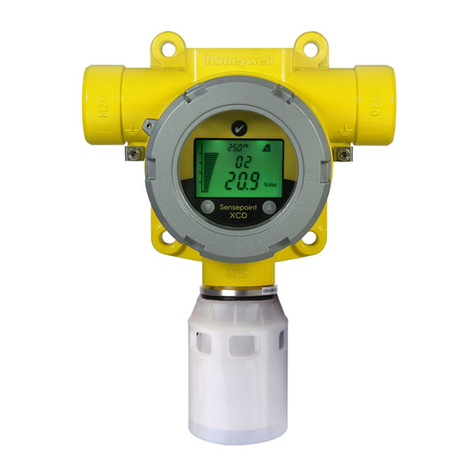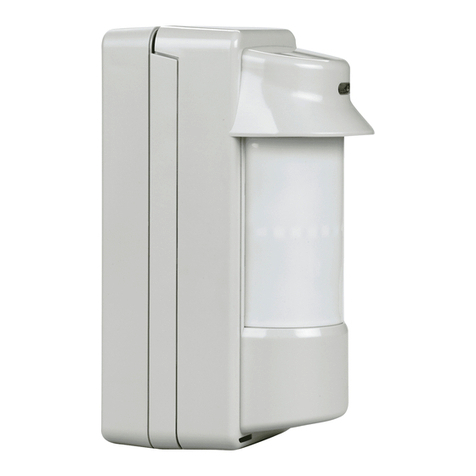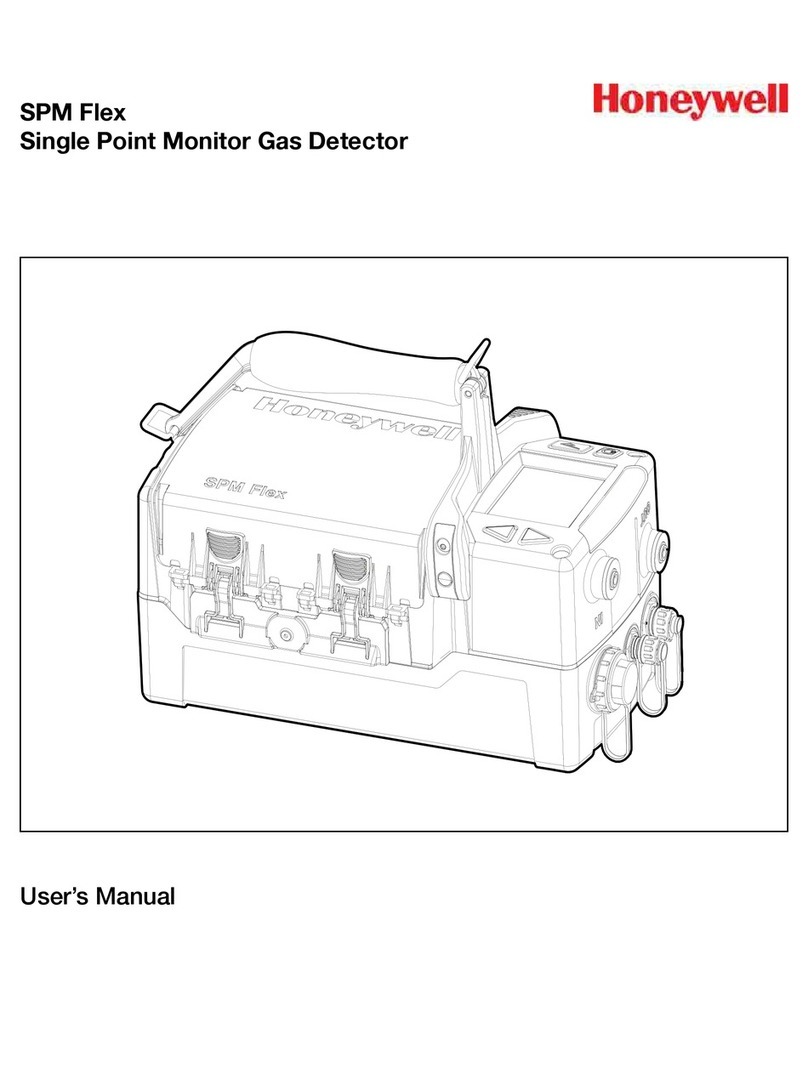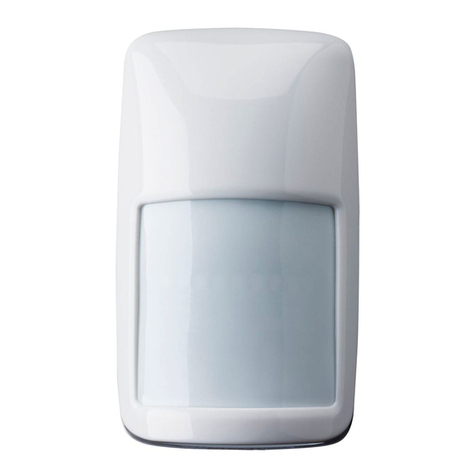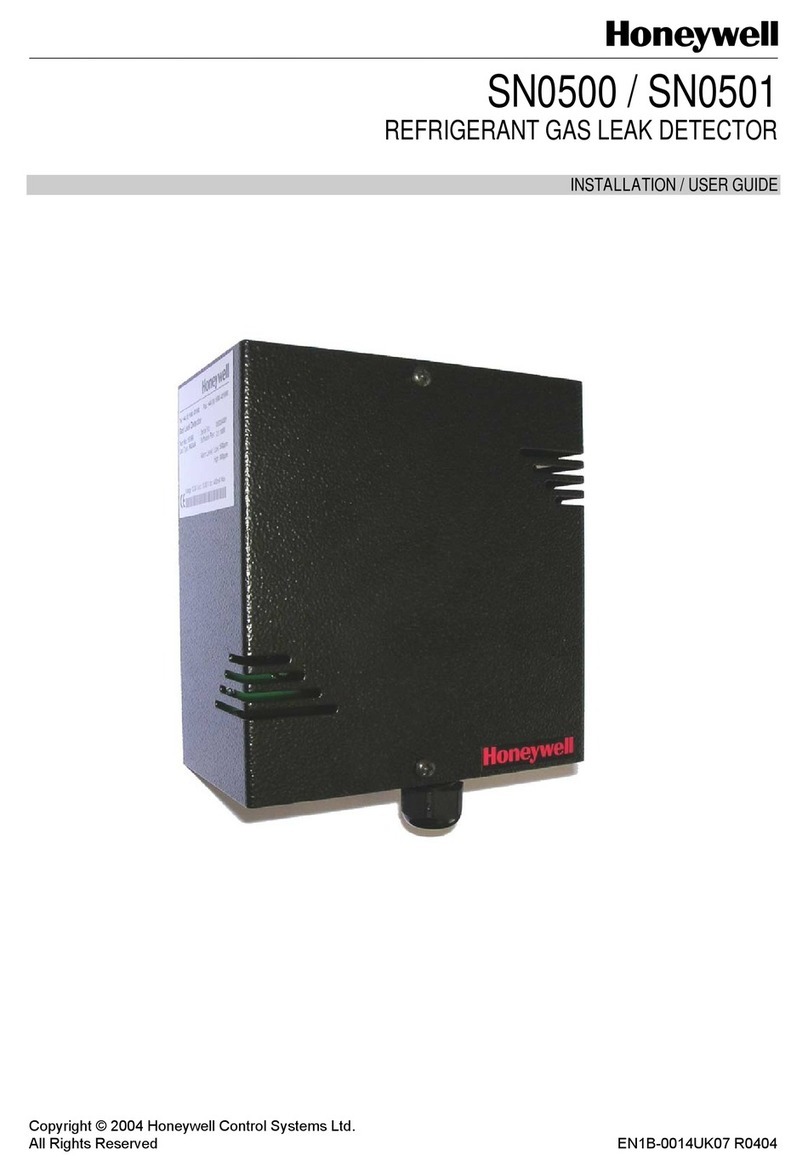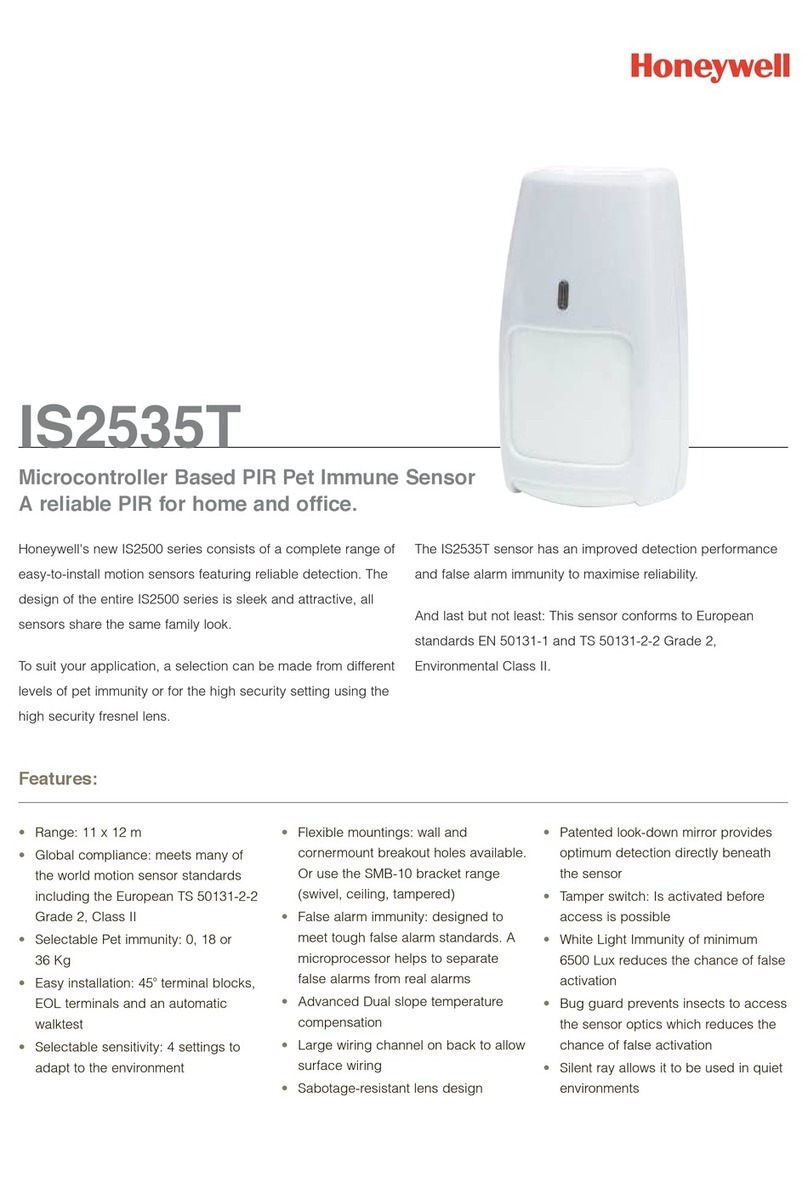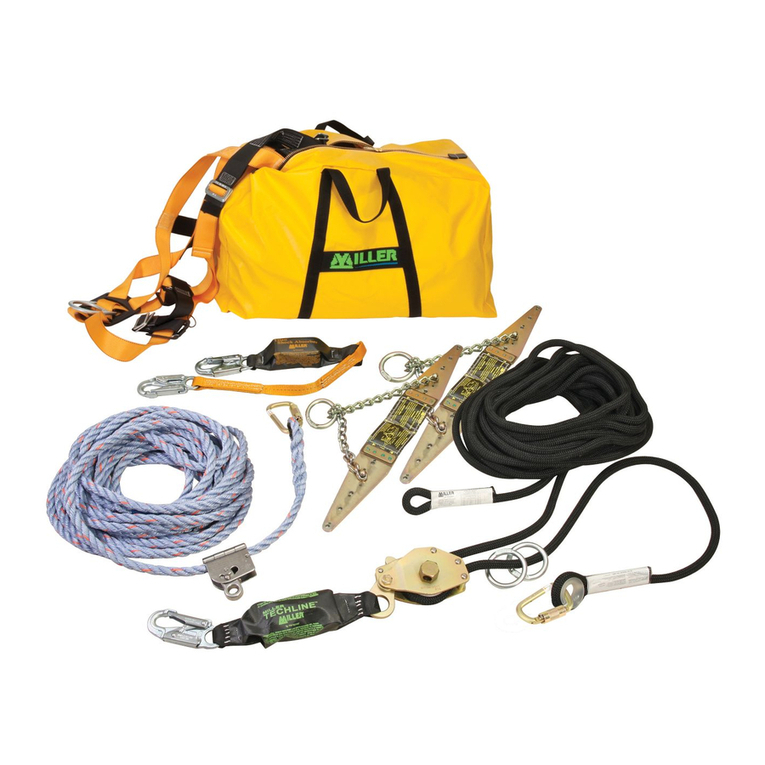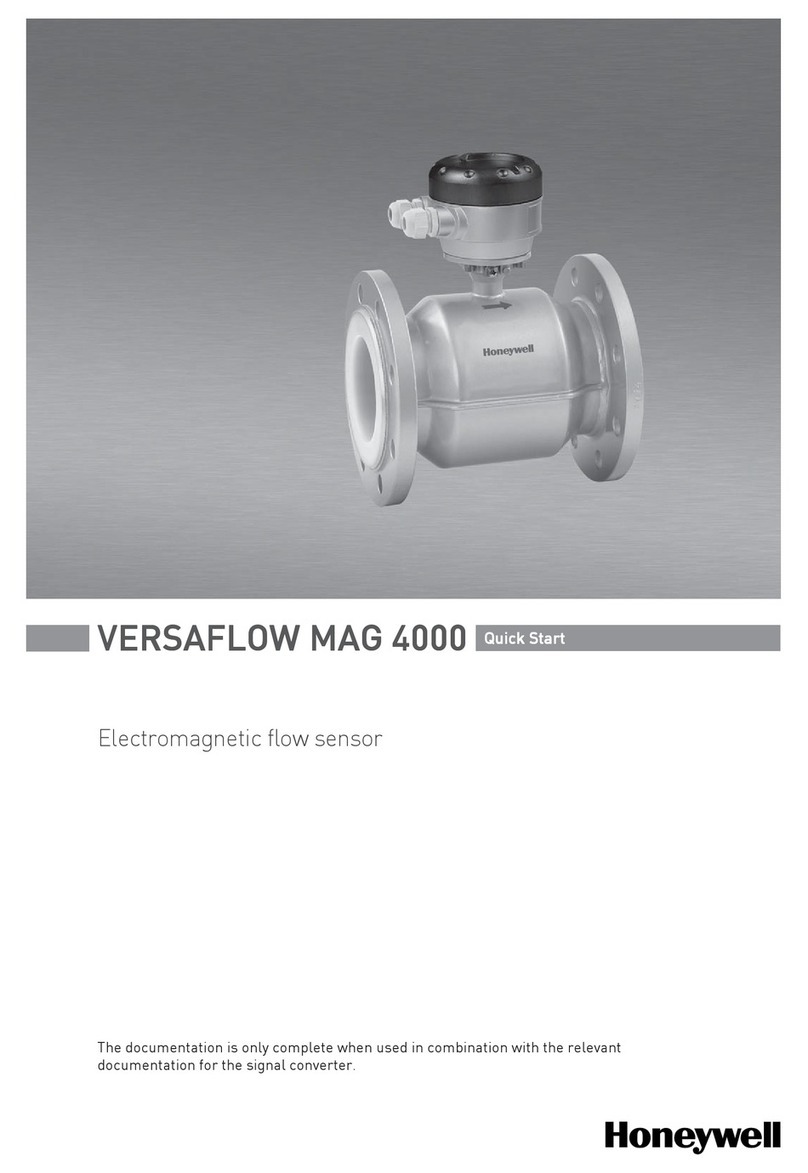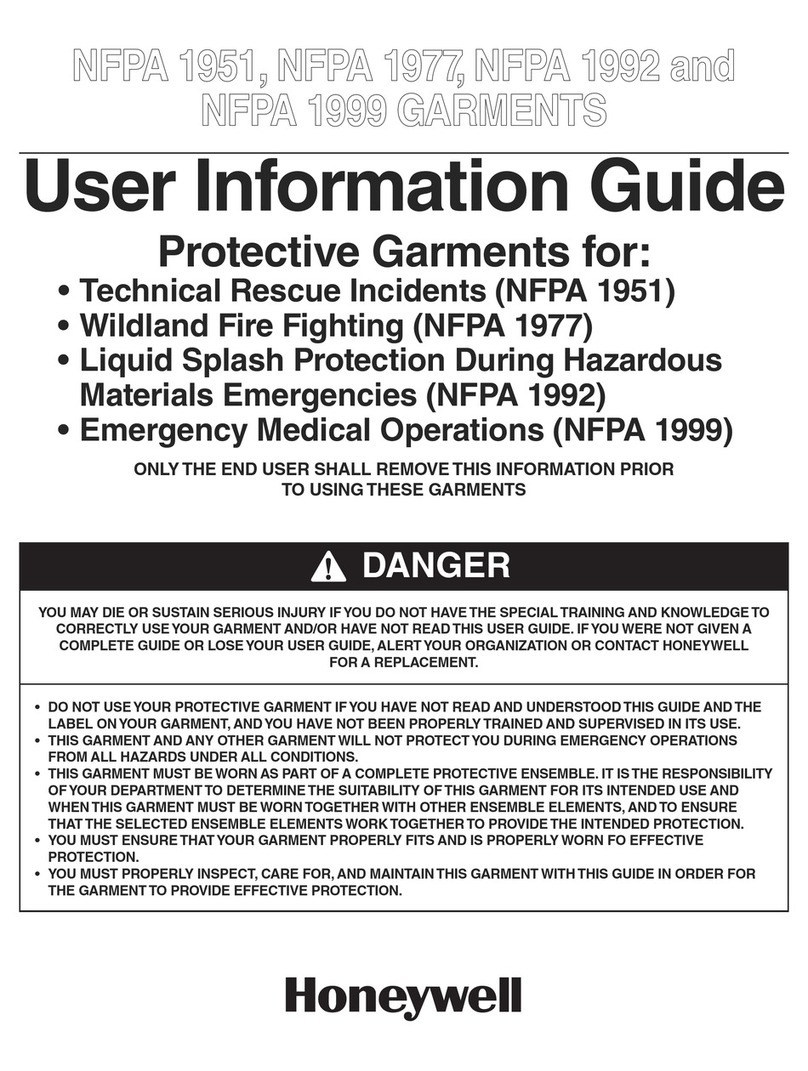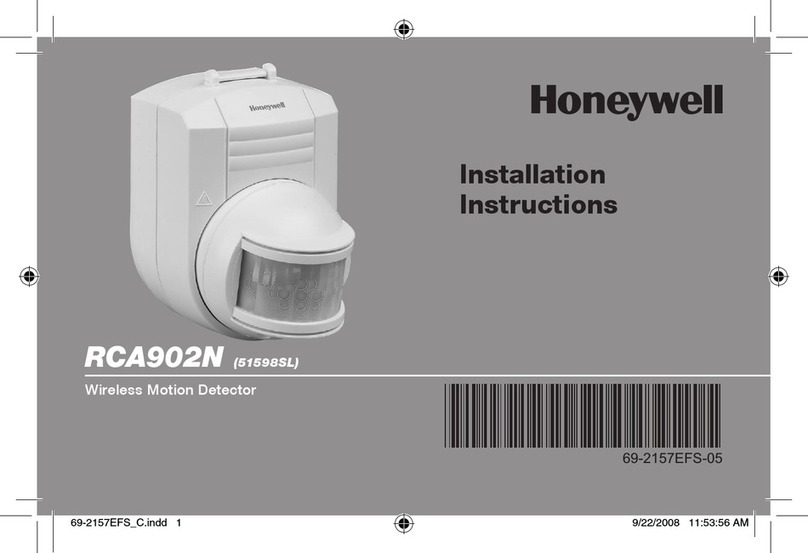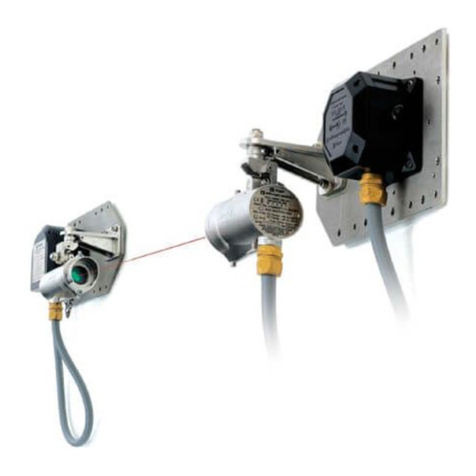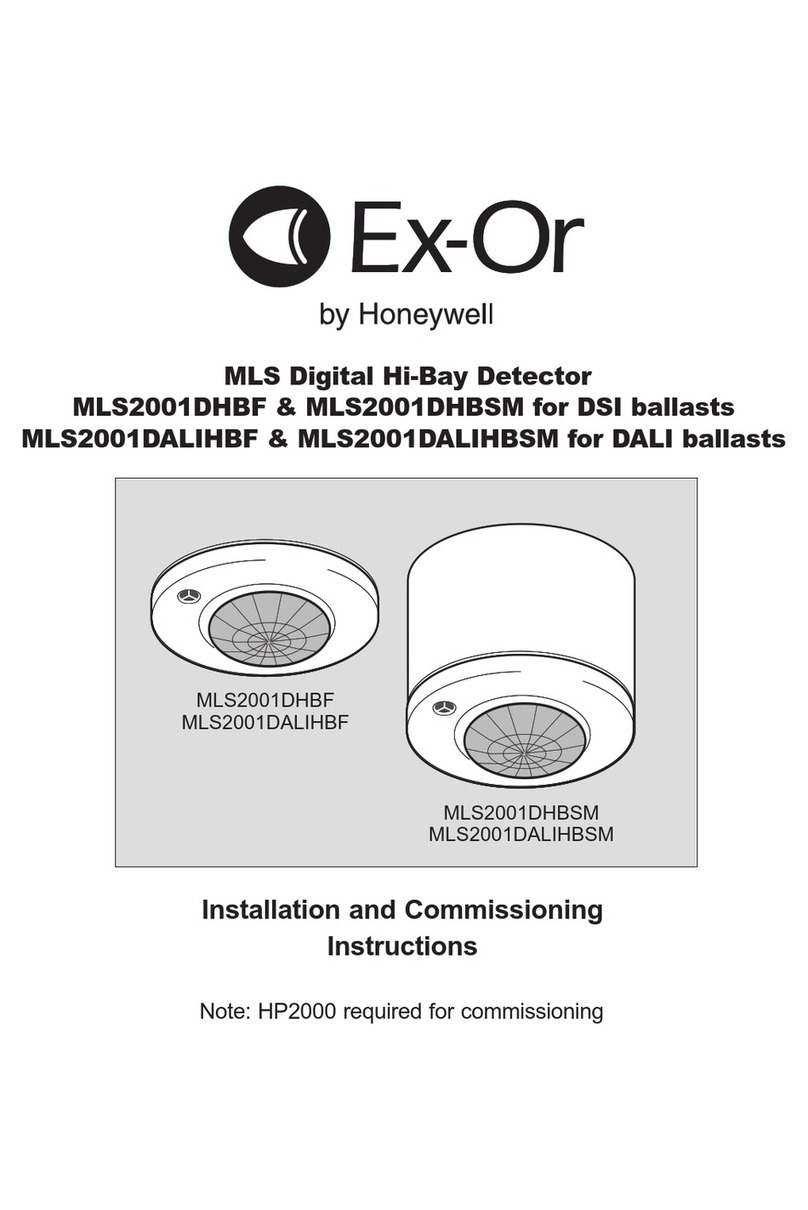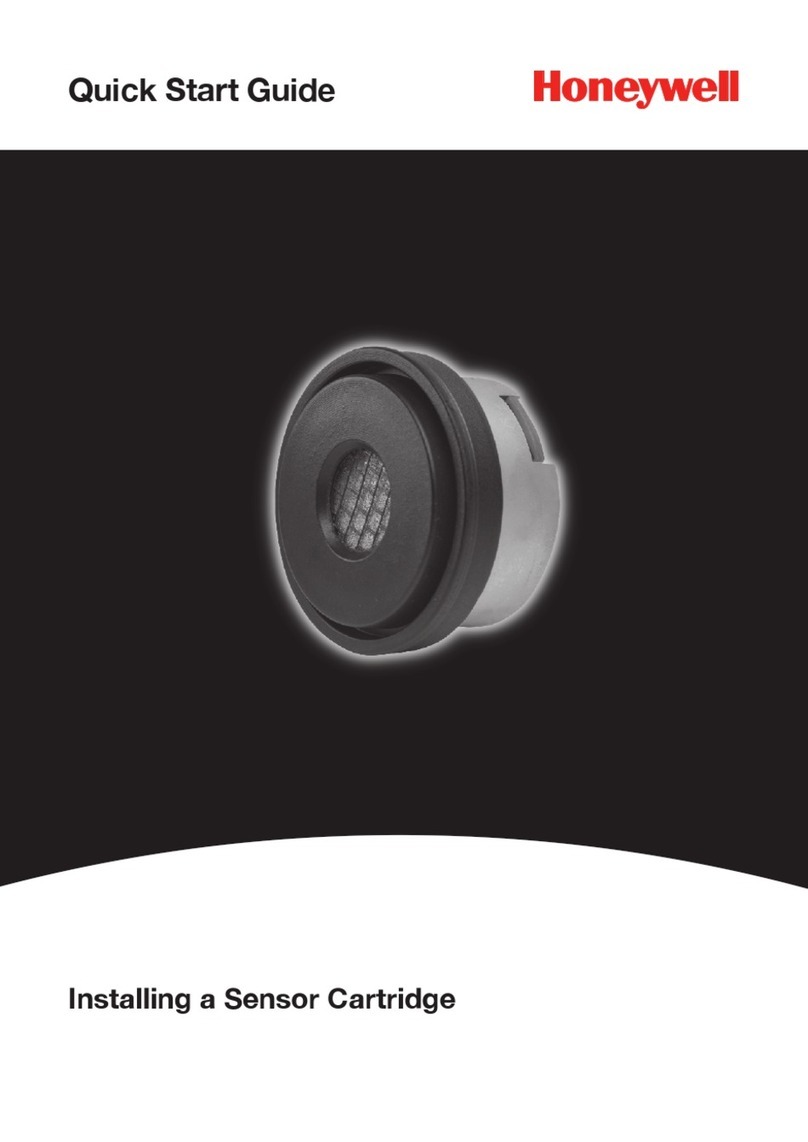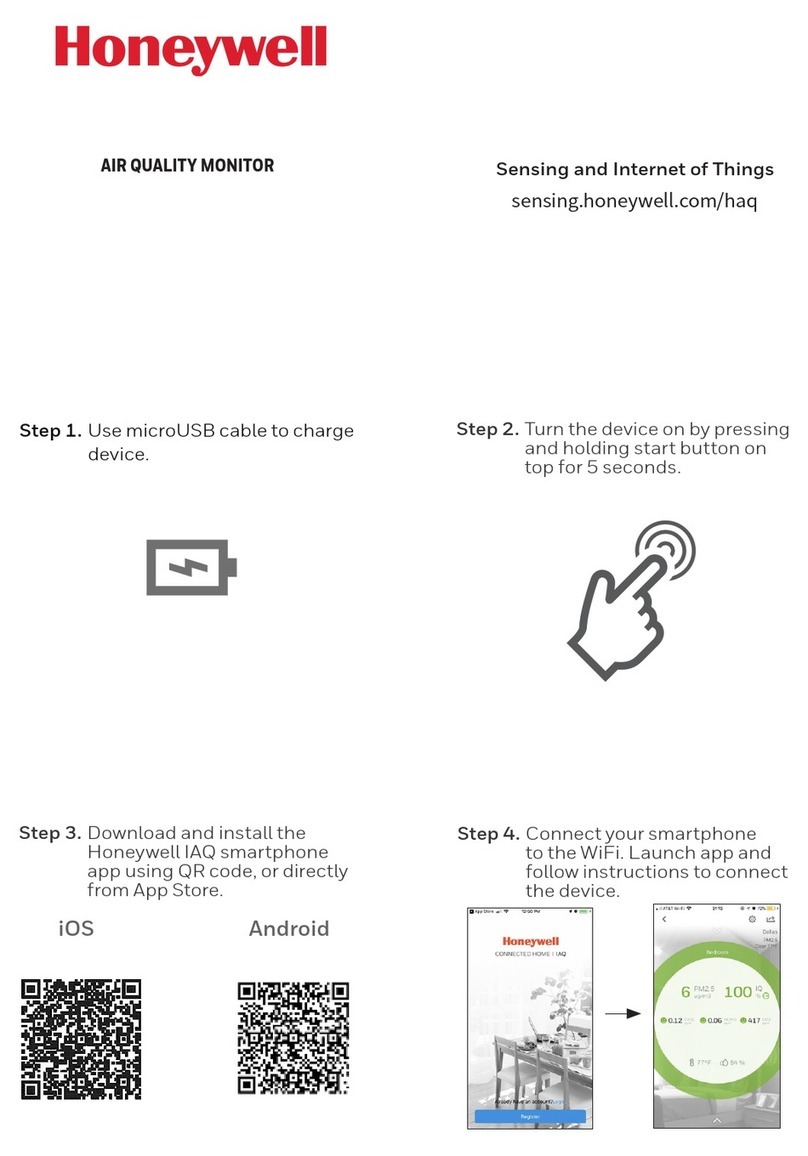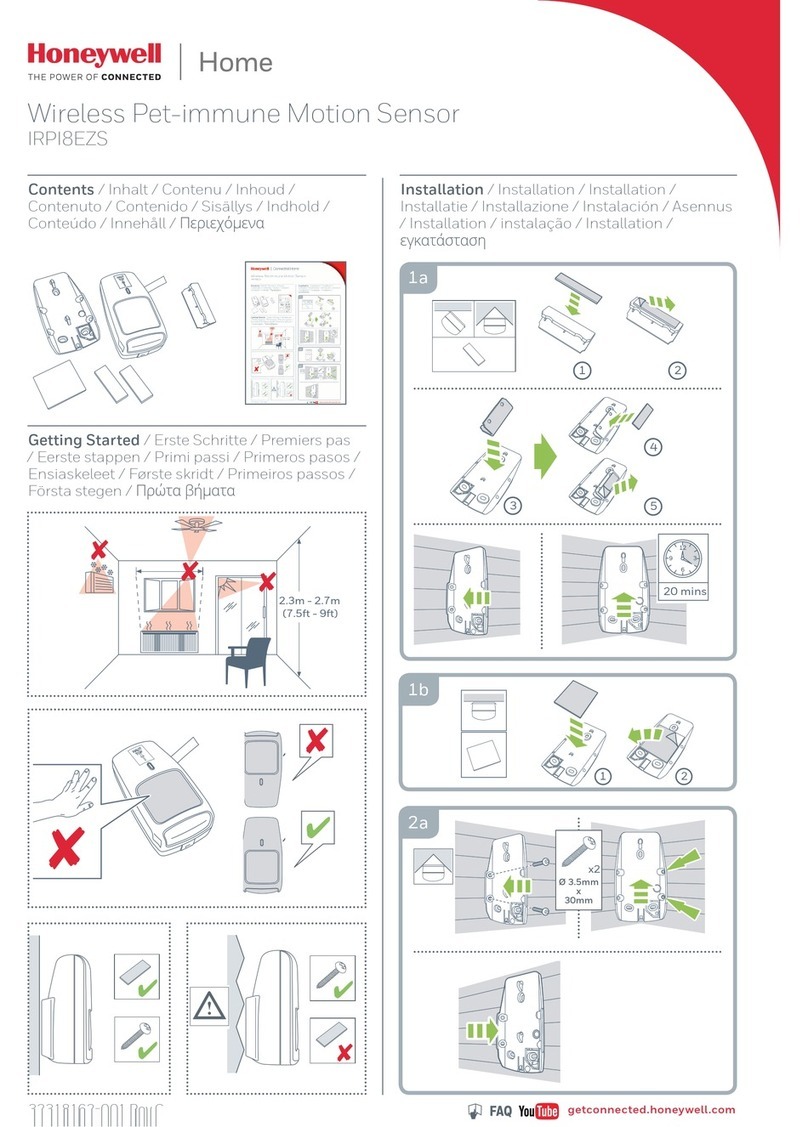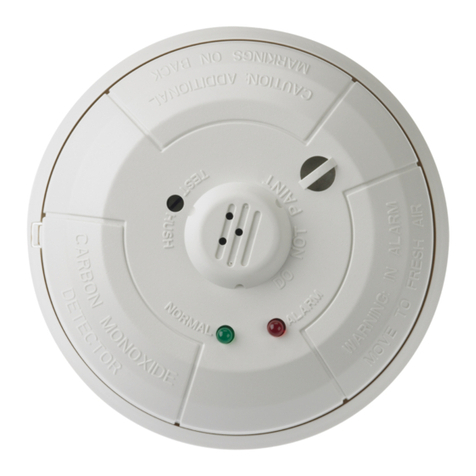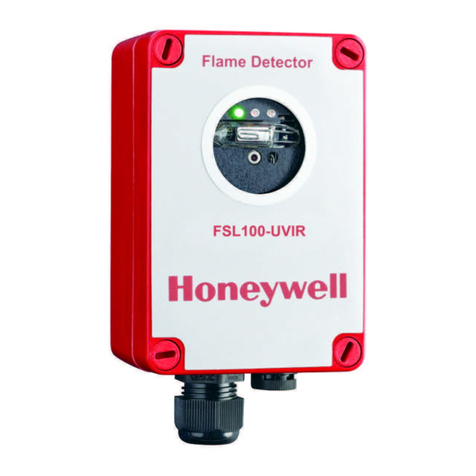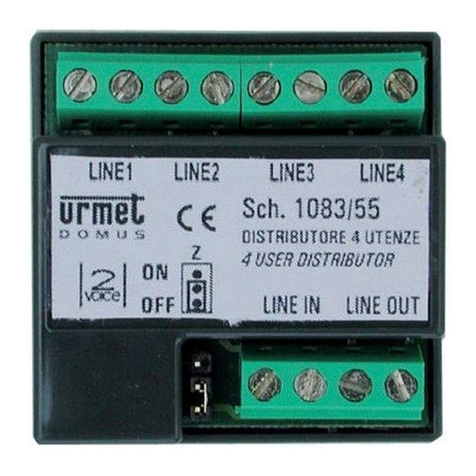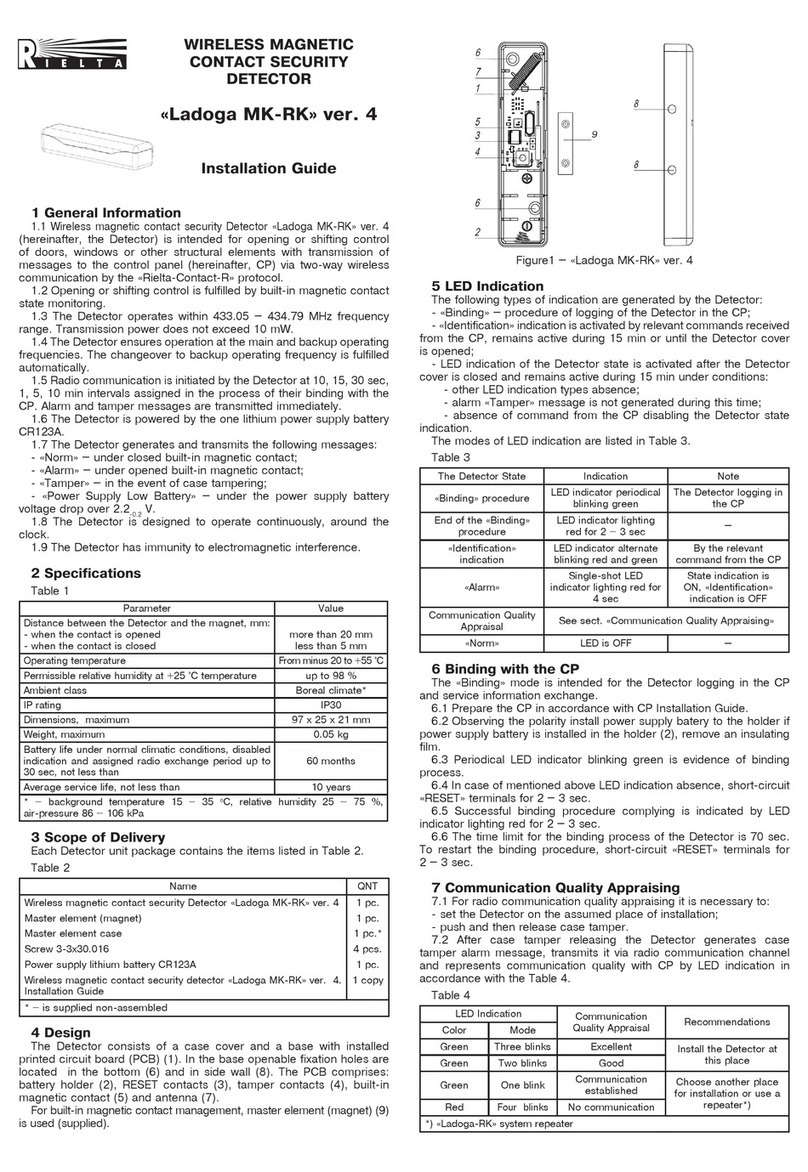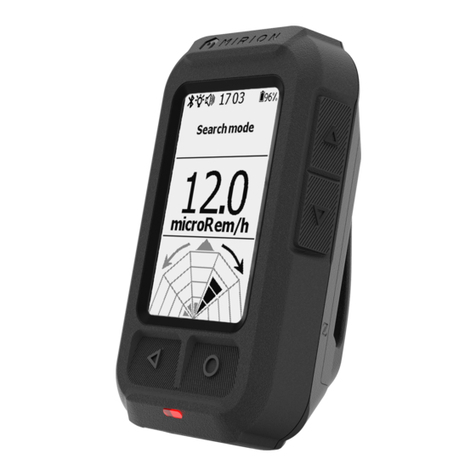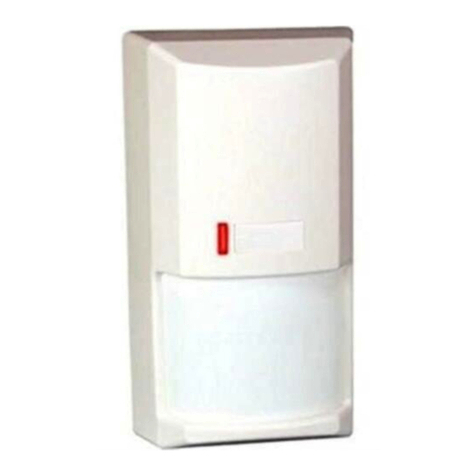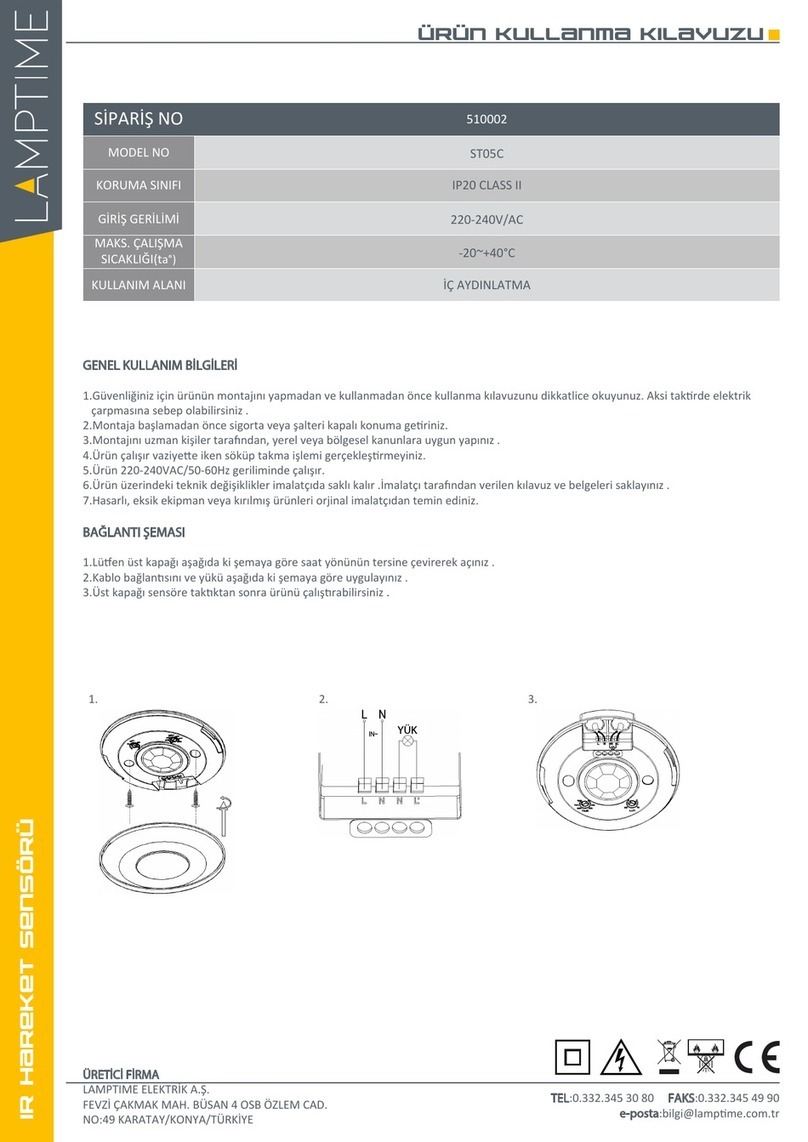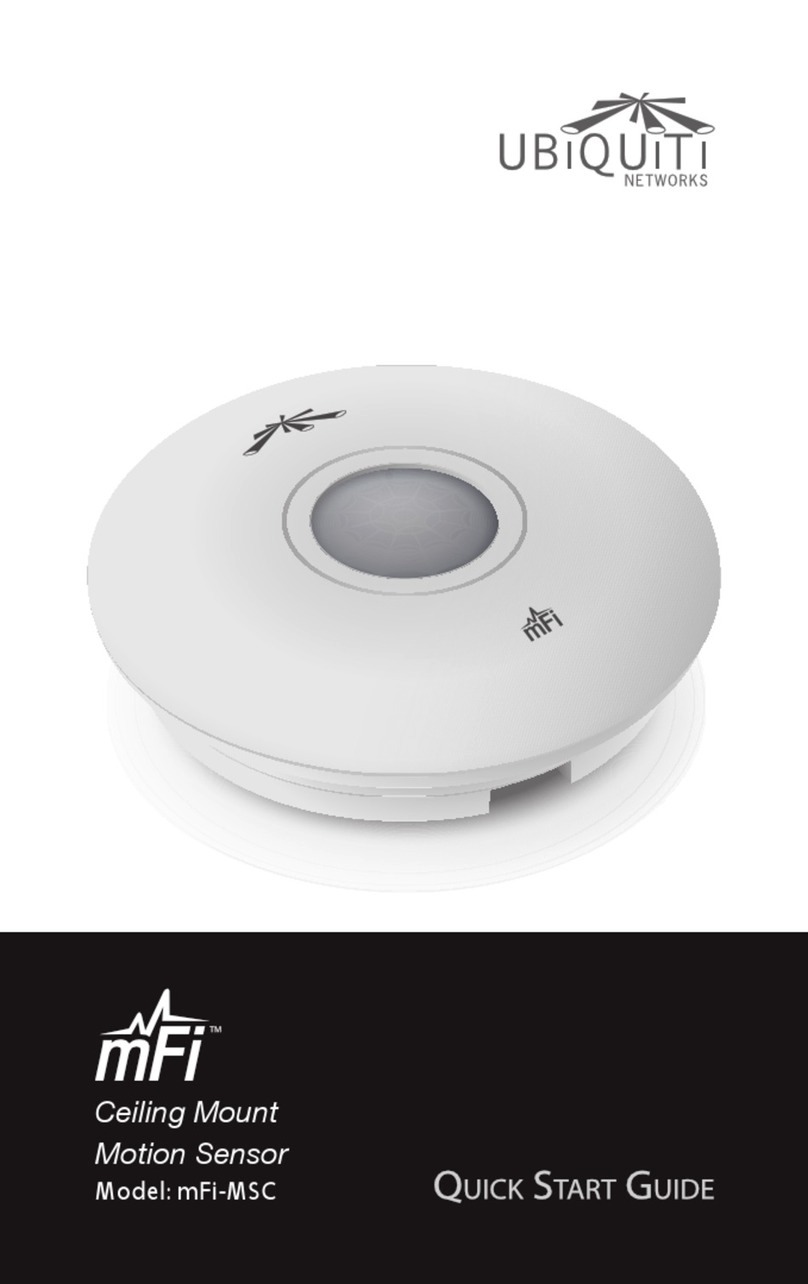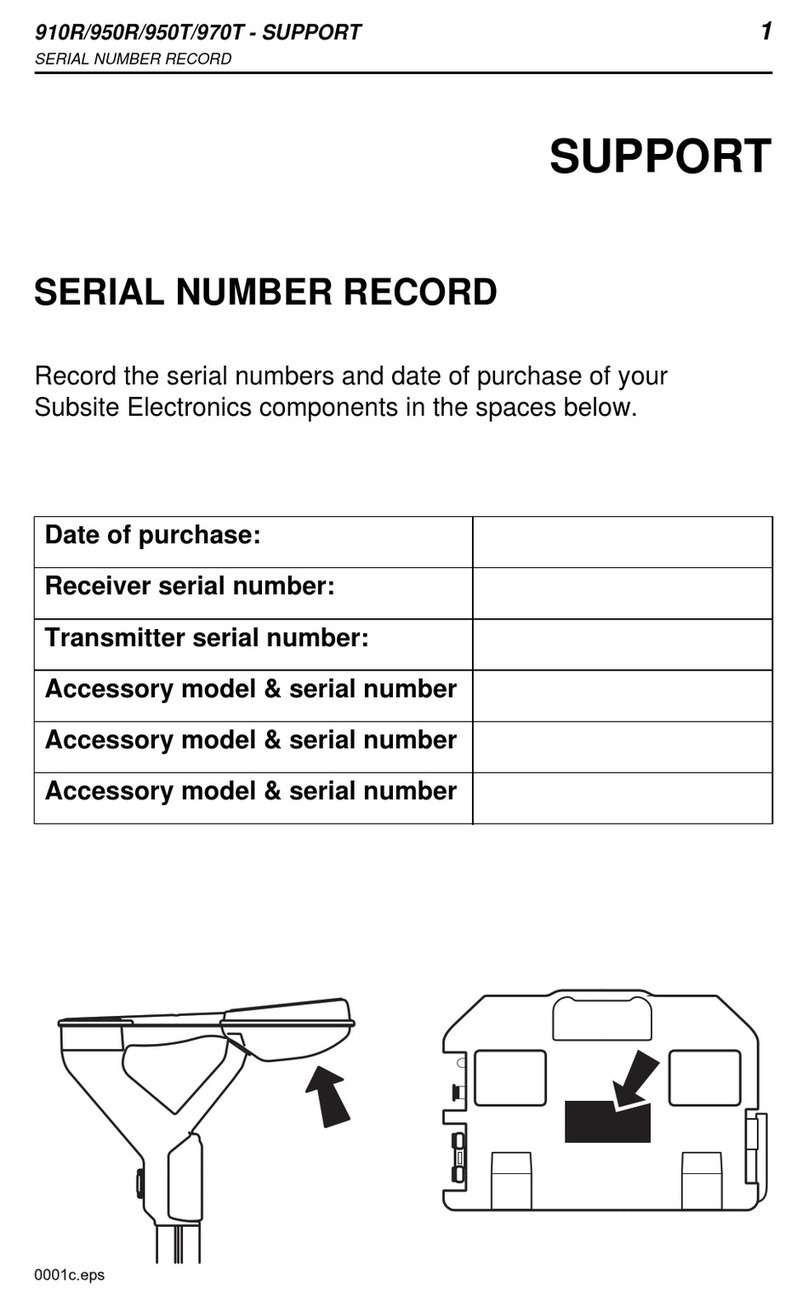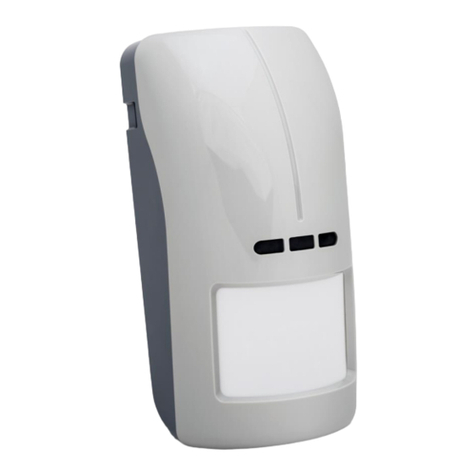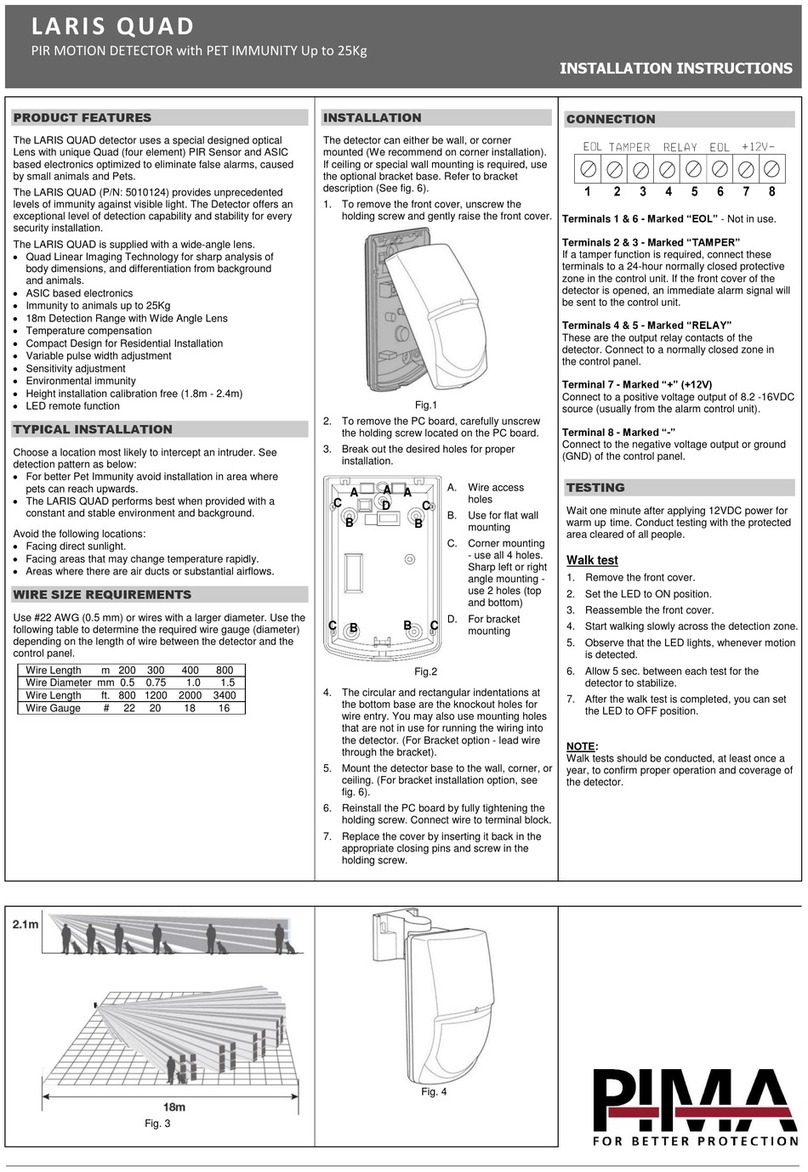
- 3 -
LED INDICATORS
The SiXCOMBO has a multi-color top LED:
Green = Supervisory indication; blinks during power on, reset,
and during normal operation
Amber = Signal maintenance and trouble events
Red = Alarm condition (either Smoke or CO)
Side LED windows indicate alarms:
red = smoke
blue = CO
CLEANING
NOTE: Notify the proper authorities when the system will be
temporarily out of service.
IMPORTANT: This detector must be tested and maintained
regularly following NFPA-72 requirements. The detector should
be cleaned at least once a year.
1. Remove the detector from the base plate by turning
counterclockwise.
2. Clean the outside casing with a cloth. Ensure that the holes
on the front of the alarm are not blocked with dirt and dust.
Canned air can be used to remove any dust or debris.
3. Reattach the detector to the base plate by rotating
clockwise.
4. Test the detector to insure it is fully functional. (See Testing
section).
5. Notify the proper authorities and Central Station when the
system is back in service
REPLACING THE BATTERIES
5800combo QG-006
23
15
4
30
0
45
20
10
Panasonic CR123A
batteries only
~ 10
sec / seg
CAUTION: The batteries used in this device may present a fire
or chemical burn hazard if mistreated. Do not recharge,
disassemble, heat above 100°C (212°F) or dispose of in fire.
Use only Panasonic CR123A Lithium batteries. Use of other
batteries may present a risk of fire or explosion. Keep used
batteries away from children. Dispose of used batteries
properly.
Remove old batteries. Wait 10 seconds and then replace with
four new batteries. To avoid a low battery indication when
installing new batteries, all 4 batteries must be installed within
15 seconds of installing the first one. Any low battery condition
that may have occurred should clear when the base plate is
installed.
NOTE: Constant exposure to high or low temperature or high
humidity may reduce battery life.
LIMITED LIFE OF CO SENSOR
This detector is manufactured with a long-life electrochemical
carbon monoxide sensor. Over time the sensor will lose
sensitivity and will need to be replaced. The life span of the CO
sensor is approximately ten years from the date of manufacture.
Periodically check the detector’s replacement date. Remove the
detector head and refer to the ‘replace by’ sticker placed on the
underneath side of the detector. The sticker will indicate the
date the detector should be replaced.
Reminder: This detector is also equipped with a feature that will
signal the panel once the CO sensor has passed the end of its’
useful life. If this occurs, it is time to replace the detector.
What to do if the detector goes into CO alarm:
If the detector goes into CO alarm (4 beeps), immediately
move to a spot where fresh air is available, preferably
outdoors, where the air is safe and call your security service
provider. Tell your provider the detector alarm status, and that
you require professional assistance in ridding your home of the
carbon monoxide.
This detector is NOT:
•A substitute for the proper servicing of fuel-burning
appliances or the sweeping of chimneys.
•To be used on an intermittent basis or as a portable alarm
for the spillage of combustion products from fuel-burning
appliances or chimneys.
Carbon monoxide gas is a highly poisonous gas which is
released when fuels are burnt. It is invisible, has no smell and
is therefore is impossible to detect with the human senses.
Under normal conditions in a room where fuel burning
appliances are well maintained and correctly ventilated, the
amount of carbon monoxide released into the room by
appliances should not be dangerous.
CAUTIONS:
•This device will only indicate the presence of carbon
monoxide gas at the sensor. Carbon monoxide gas may be
present in other areas.
•This device is designed to protect individuals from the acute
effects of carbon monoxide exposure. It will not fully
safeguard individuals with specific medical conditions. If in
doubt consult a medical practitioner.
•Installation of the device should not be used as a substitute
for proper installation, use, and maintenance of fuel-burning
appliances, including appropriate ventilation and exhaust
systems.
MAINTENANCE
Do not paint, and do not use cleaning agents, bleach or
polish the detector.
NOTE: Before performing any maintenance on the detector, notify the
proper authorities and Central Station that maintenance is being
performed and the system will be temporarily out of service. Disable
the zone or system undergoing maintenance to prevent any unwanted
alarms. Power must be removed from the detector before performing
maintenance of any kind.
The SiXCOMBO detector reports maintenance issues to the
control panel and communicates them visually and audibly per
Table 2.
Trouble feature: When the sensor (supervision) is in a trouble
condition (such as a detector that is dirty or CO sensor non-
functioning), the detector will send a trouble signal to the
control panel. Depending on the issue, the detector must then
be serviced or replaced.
NOTE: Smoke detectors are not to be used with detector
guards unless the combination is evaluated and found suitable
for that purpose.
SYMPTOMS OF CARBON MONOXIDE POISONING
Carbon monoxide bonds to the hemoglobin in the blood and
reduces the amount of oxygen being circulated in the body.
The following symptoms are examples taken from NFPA 720;
they represent approximate values for healthy adults.
Concentration
(ppm CO) Symptoms
200 Mild Headache after 2-3 hours of exposure
400 Headache and nausea after 1-2 hours of exposure
800
Headache, nausea, and dizziness after 45 minutes
of expo- sure; collapse and unconsciousness after 2
hours of exposure
Many cases of reported carbon monoxide poisoning indicate
that while victims are aware that they do not feel well, they
become so disoriented that they are unable to save
themselves by either exiting the building or calling for
assistance. Also young children, elderly and pets may be the
first to be affected.
CO ALARM ACTIVATION
Per UL standard 2075, the SiXCOMBO detector has been
tested to the sensitivity limits defined in UL standard 2034.
30+-3ppm No alarm within 30 days
70+-5ppm 60-240
150+-5ppm 10-50
400+-10ppm 4-15
SPECIFICATIONS
Electrical Specifications
Voltage:......................................................................3 volts DC
Battery Type:..................................................... CR123A lithium
Battery Manufacturer:.......................... Panasonic CR123A only
Number of Batteries: ................................................................ 4
Sensitivity:.... UL limits .9 to 3.50%/ft / ULC limits .9 to 3.08 %/ft
Thermal alarm:.................................................... 135°F (57°C)
Freeze trouble: ............................................. 41°F typical (5°C)
Audible Signal: ................................................................ 85dBA
Physical Specifications
Diameter: .................................6.3 in. Diameter x 1.65 in. Thick
...................................................... (16.002 cm x 4.19 cm Thick)
Weight:............................................................... 14.3 oz (406 g)
Operating Temperature Range: ........... 32°- 100°F (0°- 38°C)
Storage Temperature Range: ..............14 - 158°F (-10 - 70°C)
Operating Humidity Range:......................................20-95% RH

